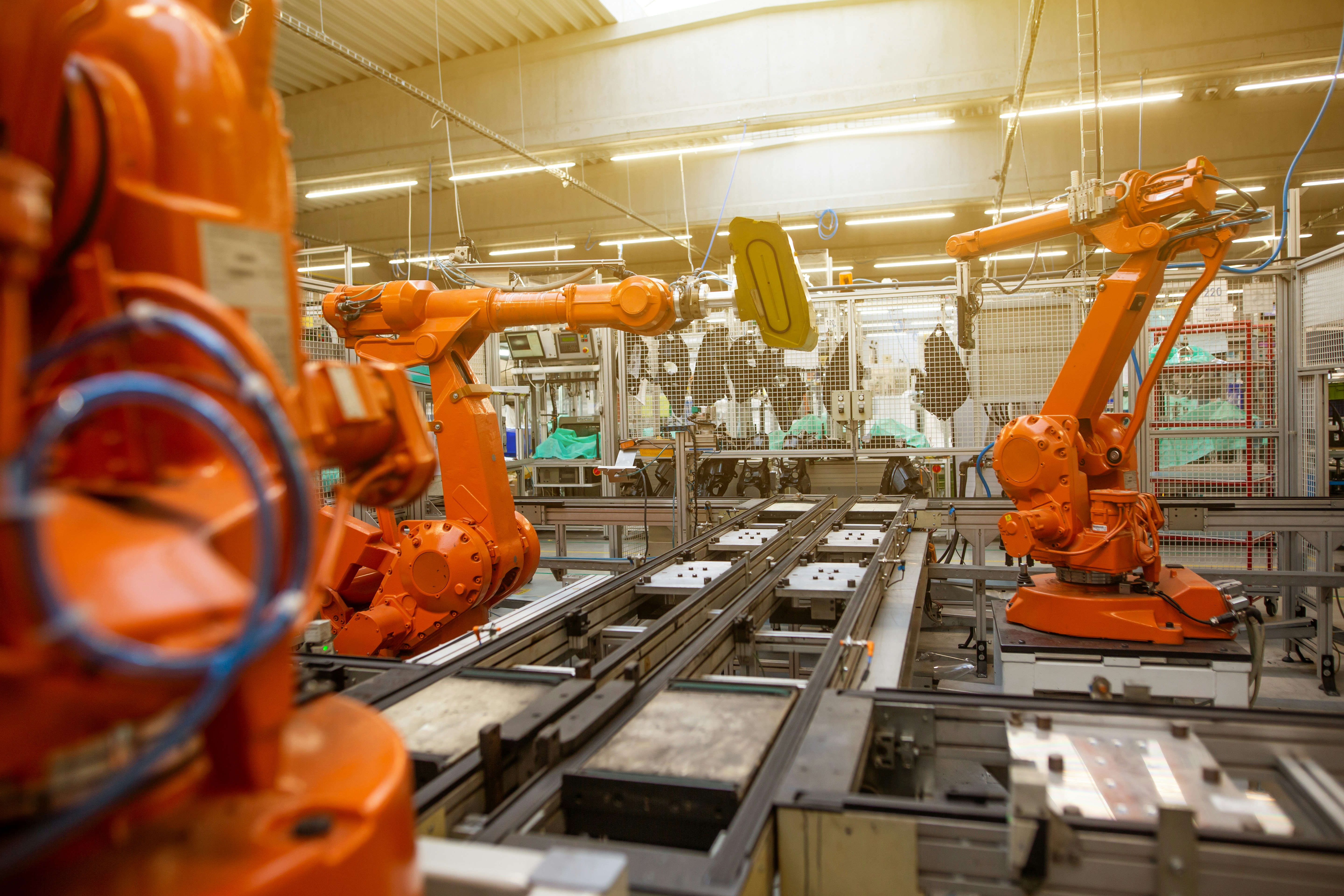
Contract vs Permanent Robotics Jobs: Which Pays Better in 2025?
The robotics sector in the UK has expanded at breakneck speed over the last decade, propelled by leaps in AI, automation, and mechanical engineering. From autonomous vehicles and warehouse automation to surgical robots and consumer robotics, innovative businesses are racing to design and deploy robotic solutions that drive efficiency and improve outcomes. The result? A robust job market flush with opportunities for robotics engineers, AI specialists, mechatronics experts, data analysts, software developers, and systems integrators.
Yet with abundance comes choice. For robotics professionals, deciding on the type of employment—whether day‑rate contracting, fixed-term contract (FTC) roles, or permanent positions—can greatly impact both income and career trajectory. In this comprehensive guide, we examine contract vs. permanent robotics jobs in 2025, exploring how each path affects your earning potential, job security, benefits, and development opportunities. We will also provide sample take-home pay scenarios, equipping you with realistic comparisons to decide which model suits your financial goals and professional aspirations. If you are passionate about the future of automation and want to thrive in the UK’s booming robotics scene, read on to discover which employment path offers the best fit.
The UK Robotics Job Market in 2025
A wave of innovation and investment has reshaped the UK robotics landscape. By 2025:
Industry Adoption on the RiseManufacturing, logistics, healthcare, retail, agriculture, and energy sectors are rapidly adopting robotics to improve productivity, reduce errors, and offset labour shortages. Demand for specialists who can design, build, and maintain these systems has soared.
AI-Powered RoboticsThanks to parallel breakthroughs in machine learning and computer vision, next-gen robots can perform complex tasks like picking delicate produce, assisting in surgeries, or delivering items within workplaces. Robotics professionals adept at integrating sensor fusion, deep learning algorithms, and real-time analytics can command high compensation.
Collaborative Robots (Cobots)A growing market for human-centric robots that safely work alongside people is transforming factory floors and warehouses. Cobots require specialists skilled in safety protocols, force control, and human–robot interaction, further diversifying the roles available.
Autonomous Vehicles and DronesFrom driverless cars on public roads to aerial drones delivering medical supplies, the UK is pioneering real-world trials. Engineers who combine robotics, computer vision, and path-planning expertise are highly sought after.
Local and Global InvestmentsThe UK government and private investors have channelled resources into robotics R&D, start-ups, and scale-ups. Clusters of robotics innovation—like in Cambridge, the Northern Powerhouse region, and London—are thriving, creating contract and permanent roles in equal measure.
This rapidly evolving field leaves robotics professionals spoilt for choice. Organisations need flexible contract help to expedite projects, while also building in-house teams for sustained development and product launches. The result is a healthy mix of day‑rate contracting, FTC, and permanent openings in the robotics domain.
Types of Robotics Employment
Day‑Rate Contracting
In day‑rate contracting, you work on a self‑employed basis, offering your robotics expertise to clients for a set daily fee. Contracts can range from short stints—like troubleshooting a robotic arm or integrating a computer vision pipeline—to multi-month engagements assisting with major hardware or software deployments.
Earning StructureContractors typically bill by the day, with rates in the UK robotics sector commonly ranging from £400 to £1,000 (or even more) depending on specialisation (e.g., advanced AI, surgical robotics, automotive autonomy).
Tax ImplicationsOperating through a limited company or an umbrella company, contractors face IR35 legislation, which determines if they are genuinely self‑employed (“outside IR35”) or effectively an employee (“inside IR35”). This classification significantly influences net pay—‘outside IR35’ often allows for more tax-efficient dividends, while ‘inside IR35’ sees the contractor taxed similarly to a salaried employee.
Working ConditionsContractors usually enjoy autonomy in how and where they work, focusing on deliverables rather than rigid corporate structures. However, they must constantly seek new projects once contracts conclude, facing potential gaps in income and lacking standard employee benefits.
Fixed‑Term Contract (FTC) Roles
An FTC is an employee arrangement with a predefined end date (commonly 6, 9, or 12 months). In robotics, companies might use FTCs to:
Address urgent staffing shortages
Execute a time-limited R&D initiative
Cover employees on parental or sabbatical leave
Pilot new technologies without committing to permanent headcount
Earning StructureFTC employees receive a monthly salary, often comparable to or higher than permanent staff if the skill demand is urgent. While the day-to-day breakdown may be less than top contractor rates, it is typically more stable than contracting.
Tax and BenefitsFTC employees are on PAYE, meaning income tax and National Insurance are deducted automatically. You usually receive holiday pay, sick pay, and sometimes minimal pension contributions. No IR35 worries here.
Working ConditionsFTC employees often blend seamlessly with permanent teams, working within established workflows but aware of their set end date. Employers may extend or convert FTC roles if budgets allow or the project is successful.
Permanent Positions
In a permanent robotics role, you are hired indefinitely, benefiting from structured career development and integrated responsibilities—whether as a robotics engineer, mechatronics expert, AI developer, or product manager.
Earning StructureSalaries vary widely:
Junior: ~£30,000 to £45,000
Mid-level: ~£45,000 to £70,000
Senior/Lead: ~£70,000 to £100,000+
Management/Director: >£100,000, especially in big tech or well-funded scale-ups
Many companies also offer performance bonuses, share options, or profit-sharing arrangements.
Benefits and PerksPermanent staff typically enjoy:
Employer pension contributions (potentially higher than the statutory minimum)
Holiday allowance (25+ days plus bank holidays in the UK)
Private healthcare
Sick pay
Flexible or remote working policies
Funded training (e.g., advanced robotics courses, leadership programs)
Working ConditionsPermanent positions offer long‑term security, allowing you to build deep domain expertise and potentially guide the company’s robotics roadmap. However, daily wages often lag behind premium contracting rates, and you must align with the organisation’s internal policies and structures.
Pros and Cons of Day‑Rate Contracting
Pros
High Daily PayRobotics expertise is highly specialised. Contractors with advanced skills in robotic operating systems (ROS), sensor fusion, or real-time AI can command day rates well above the pro-rata salaries of permanent roles.
Flexibility and Project VarietyContractors can pick engagements that match their interests or desired timeframe. This variety accelerates skill growth and fosters a broad professional network.
Tax Advantages (If Outside IR35)Operating through a limited company may let you draw dividends and write off certain business expenses. This can reduce overall tax liabilities, provided contracts genuinely fit an “outside IR35” model.
AutonomyContractors are valued for delivering results quickly, with less involvement in corporate politics or lengthy decision-making processes.
Cons
IR35 RisksIf deemed “inside IR35,” you pay similar taxes to permanent employees but miss out on benefits. Misclassification can lead to unexpected tax bills.
Unsteady Work PipelineContracts can end abruptly. Identifying and securing the next project demands consistent networking and marketing efforts.
Lack of Employee PerksContractors self-fund pensions, insurance, and have no automatic sick pay or holiday pay. This overhead can erode the raw advantage of higher day rates.
Limited Strategic InfluenceYou may not shape long-term robotics strategy, as you are hired for a specific deliverable or short-term milestone.
Pros and Cons of Fixed‑Term Contract Roles
Pros
Stable Monthly SalaryFTC employees receive consistent pay, making budgeting more predictable than in short-term contracting.
Employee ProtectionsStatutory sick pay, holiday allowance, and sometimes pension contributions are typical. You also avoid the complexities of IR35.
Clear DeliverablesOften, FTC roles revolve around high-impact projects—like delivering a proof-of-concept autonomous robot or installing new robotic arms in a production line—providing a concise narrative for your CV.
Reduced AdminTaxes and National Insurance are handled by the employer, saving time and stress compared to self‑employed administration.
Cons
Fixed End DateOnce the contract finishes, you must find a new role unless extended. This can bring job-hunting stress if no extension is forthcoming.
Less Opportunity for Career GrowthEmployers often focus major promotions and leadership training on permanent staff. While you might gain significant experience, your progression can stall if the contract is strictly time-limited.
Limited Company PerksSome bonus schemes, share options, or advanced training might be reserved for permanent employees.
Possible Outsider StatusEven though you are an employee, you may be considered a temporary resource, potentially missing out on long-term strategic decisions or deep integration into company culture.
Pros and Cons of Permanent Robotics Roles
Pros
Comprehensive BenefitsTypical packages include strong pension matches, paid holidays, sick pay, private healthcare, and formal career development programmes—particularly in larger robotics firms or tech giants.
Long‑Term SecurityPermanent roles offer indefinite contracts, often with formal notice or redundancy packages if economic headwinds or reorganisations occur.
Career AdvancementOrganisations invest in permanent staff’s training and promotions, seeing them as integral to the firm’s future. Over time, you could move from engineer to team lead, project manager, or head of robotics R&D.
Influence and OwnershipBy staying at one firm, you gain deeper knowledge of its systems, shape core robotics solutions, and potentially steer strategic decisions or product roadmaps.
Cons
Lower Day‑to‑Day RatesYou might earn less in the short run compared to a day‑rate contractor with similar experience, especially if they consistently secure outside IR35 contracts at premium rates.
Less FlexibilityPermanent employees typically must follow set schedules, annual leave policies, and organisational processes, with less autonomy to choose project tasks.
Potentially Slower Pay GrowthAnnual performance reviews or promotions can limit how quickly your salary rises, potentially lagging behind market rates in a hot robotics sector.
Risk of MonotonyIf the firm’s robotics direction stagnates, you might find your skill set or motivation plateauing unless you proactively seek new internal challenges.
Sample Take‑Home Pay Scenarios
These hypothetical scenarios illustrate how net income might differ across day‑rate contracting, FTC roles, and permanent positions in the UK robotics industry. Actual results will vary based on tax codes, contract structure, IR35 status, and location.
Scenario 1: Day‑Rate Robotics Contractor
Role: Senior Robotics Engineer (specialising in real-time vision + manipulation for pick-and-place systems)
Day Rate: £800
Working Weeks per Year: 42 (accounting for ~10 weeks off for holidays, training, or contract gaps)
Gross Annual Income42 weeks × 5 days × £800/day = £168,000
IR35 Status
If Outside IR35: You can operate via a limited company, paying corporation tax (~20%), then drawing dividends. Overall effective tax might be ~25–35%.
If Inside IR35: Taxed similar to a salaried role, significantly reducing net.
Assuming Outside IR35, you could net £109,000–£126,000 after taxes and fees. Remember, no automatic pension or holiday pay—these must be budgeted for personally. Extended downtime beyond the assumed 10 weeks will reduce income.
Scenario 2: Permanent Robotics Professional
Role: Mid–Senior Robotics Engineer (AI + ROS integration)
Base Salary: £70,000
Performance Bonus: 10% (i.e., £7,000)
Employer Pension Contribution: 5%
Total Potential Earnings: £77,000
Taxation
An approximate 30% effective tax and National Insurance on £70,000 might leave ~£49,000 net.
The £7,000 bonus also is taxed, yielding ~£4,900 additional net.
Pension Contribution
5% of £70,000 = £3,500 per year.
Hence, your approximate take‑home pay might be ~£53,900 plus a £3,500 employer pension contribution. You also have paid holidays (commonly 25 days + bank holidays), sick pay, and potentially private healthcare or share options.
Scenario 3: Fixed-Term Contract (FTC) Robotics Employee
Role: Autonomous Vehicle Control Specialist (12-month contract)
Pro Rata Annual Salary: £90,000
Monthly Gross: £7,500
Employer Pension Contribution: 3%
Annual Gross Pay£90,000 for the year, taxed via PAYE.
Net IncomeWith an approximate 30% tax rate, you might clear ~£63,000 net.
Pension Contribution3% of £90,000 = £2,700 for the year.
During the contract, you gain statutory holiday and sick pay but no guarantees beyond 12 months. If the contract ends without renewal, you return to the job market.
Beyond Salary: Other Important Considerations
Job Security
Contractors: Potentially high pay, but no guarantee of continued employment post-contract. Economic or budget changes can lead to abrupt termination.
FTC Employees: Assured pay for the contract’s set duration, though there is a fixed end date and no long-term certainty.
Permanent Employees: Generally enjoy indefinite contracts, notice periods, and redundancy packages—though no role is immune to market shifts.
Career Progression and Skills Development
Contractors: Rapid exposure to diverse robotic systems, from warehouse automation to collaborative arms. However, formal employer-funded training is uncommon, so you must self-invest in skill growth.
FTC Employees: Gain deep insight during the contract, but leadership paths or promotions typically favour those in permanent roles.
Permanent Employees: Structured development plans, mentorship, and potential leadership roles. Employers often sponsor advanced training in robotics software, mechanical design, or AI to retain talent.
Work–Life Balance
Contractors: Freedom to take breaks between contracts, but no paid leave. Some projects can be high-intensity, requiring extra hours to meet deadlines.
FTC Employees: Receive employee rights like holiday pay. Work demands can be intense if the contract’s scope is ambitious and time-limited, but you have a stable monthly schedule for the contract’s duration.
Permanent Employees: Established HR frameworks offer consistent holiday and sick leave. However, ongoing responsibilities or new product launches may result in peak workloads or on-call rotations.
Regulatory Environment and Compliance
Contractors: Must manage IR35 status, tax, insurance, and professional indemnity. If working on safety-critical systems (e.g., medical robotics or automotive), additional certifications or risk compliance might be necessary.
FTC Employees: The employer handles tax and compliance. You follow the same operational and safety protocols as permanent staff.
Permanent Employees: Similarly, you are taxed via PAYE, with the company responsible for compliance. Your role may involve ensuring your solutions meet industry regulations (e.g., ISO standards, CE or UKCA marking).
Industry Networking and Reputation
Contractors: Build an extensive network through multiple engagements across different industries. Positive project outcomes can generate referrals or repeat contracts, boosting your day rate.
FTC Employees: Strong ties within one organisation for the contract’s term. If the project is pivotal, you could earn excellent references and broaden your skill set quickly.
Permanent Employees: Develop deep internal connections, potentially spanning various departments or business units over time. You may become an influential internal figure or project lead, though external networking might require extra effort at industry events or meetups.
Which Path Pays Better in 2025?
Purely in terms of top-line pay, day‑rate contracting can deliver the highest gross income—particularly if you:
Possess niche robotics expertise (e.g., advanced ROS, machine vision, human–robot interaction, autonomous navigation) that is in short supply.
Secure “outside IR35” status.
Minimise downtime between contracts.
Handle your own admin diligently.
Fixed-term contracts (FTCs) occupy a middle ground: stable monthly pay for a set period, partial employee benefits, and no IR35. You benefit from focusing on key deliverables but face a contract end date with no guarantee of renewal.
Permanent roles often yield lower day-to-day pay compared to high-level contracting, but provide:
Long-term security and potential for steady salary growth or big internal promotions over time
Robust benefits: pension, healthcare, share options, etc.
Career development: potential leadership roles, formal training, a sense of ownership and influence in the organisation’s robotics strategy
Ultimately, “which pays better” in the long run depends on multiple factors, including your professional goals, personal risk tolerance, and the value you place on consistency vs. variety, autonomy vs. stability. A senior contractor might earn more in a year if they maintain consistent contracts at high rates, but a permanent employee could accumulate stronger long-term financial rewards via bonuses, share options, or upward mobility within a scaling robotics firm.
Conclusion
The UK robotics sector in 2025 abounds with opportunities—be it in designing collaborative arms for factories, advancing AI-driven navigation for driverless vehicles, or developing state-of-the-art surgical robots. Employers are hiring day‑rate contractors, fixed-term employees, and permanent staff to meet spiralling demands for automation solutions that transform how industries operate.
For robotics professionals, the choice between contract, FTC, or permanent roles hinges on earnings, benefits, job security, and career ambitions:
Day‑Rate Contracting: Potentially highest pay in the short term, plus freedom to select projects, yet it requires resilience, IR35 vigilance, and building a personal financial buffer for contract gaps.
Fixed-Term Contracts: A balanced approach providing a stable salary over a set period, with some employee perks—ideal for professionals keen to deliver targeted deliverables without indefinite commitment.
Permanent Positions: Comprehensive benefits, structured career growth, and secure employment. While daily rates can be lower than contracting, total compensation (pension, bonuses, stock options) plus a robust development path might yield substantial returns over time.
Whatever your path, staying ahead in robotics requires continual upskilling. As AI evolves and new hardware emerges, building expertise in areas like deep reinforcement learning, sensor fusion, or human–robot collaboration can magnify both your value and your bargaining power—regardless of whether you are a day‑rate contractor, an FTC hire, or a permanent team member. Carefully weigh financial priorities, lifestyle preferences, and professional development goals to determine the employment model that best suits your journey in the fast-growing world of robotics.
Ready to discover your next robotics opportunity—whether contract, fixed-term, or permanent?Visit www.roboticsjobs.co.uk to browse the latest openings across the UK. From start-ups building state-of-the-art cobots to large-scale manufacturers pioneering next-gen automation, you will find roles that match your aspirations. Take charge of your robotics career—and help shape the future of automation today!


